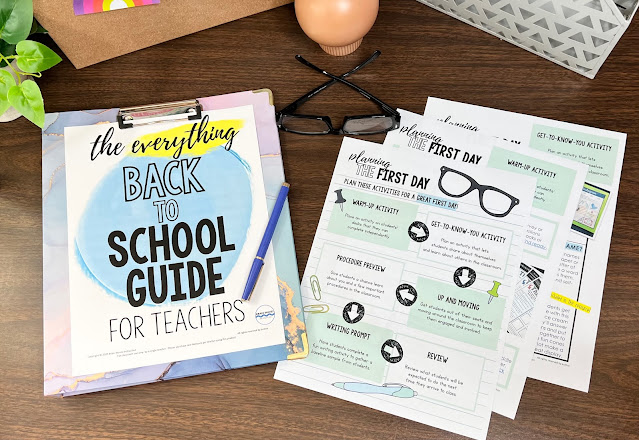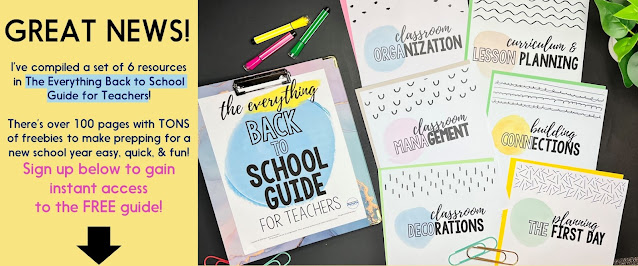Long-Range Curriculum Planning for Middle School ELA: A Comprehensive Guide for Teachers
June 12, 2023Starting a new school year signals the beginning of a great deal of curriculum planning. Determining what to teach in what order can be overwhelming especially since effective long-range planning is the cornerstone of a successful middle school English Language Arts (ELA) classroom. It allows teachers to set clear goals, create engaging lessons, and ensure a coherent and well-structured curriculum throughout the year. In this blog post, I'm sharing a step-by-step guide on how to complete long-range planning for your middle school ELA curriculum.
Here's the best news, though! ⤋ ⤋ ⤋
I've put together these tips and the tools for long-range planning in the free Back to School Guide for Teachers. Get the 100+ resource filled with exclusive freebies sent to your inbox here.
Start by thoroughly reviewing the ELA curriculum standards and objectives for your grade level. Understand the scope and sequence of the content that needs to be covered throughout the year. Identify the key skills, themes, and concepts that students should master by the end of the academic year.
TIP: Use backward design: Begin your planning process by considering the desired end result—what do you want your students to achieve by the end of the year? Work backward from there to determine the steps and skills necessary to reach those goals.
TIP: Capitalize on students' natural excitement for holidays and special events and incorporate critical ELA skills into seasonal units. For instance, have students write poems for Veterans Day or complete mini-research projects as they learn about Christmas around the world. Find all my favorite content-rich holiday resources here.
For each unit, establish clear goals and learning outcomes that align with the curriculum standards. These goals should be specific, measurable, achievable, relevant, and time-bound (SMART). By setting clear objectives, you'll be better able to monitor student progress and ensure that your instruction remains focused.
TIP: As you're designing units, incorporate authentic texts: Integrate a wide range of authentic texts, such as novels, articles, poems, and multimedia resources, to engage students and expose them to diverse perspectives and literary forms. I'm a big fan of authentic texts, find ready-made literature units here.
TIP: It's a great idea to teach students how to actually prepare for assessments. Consider incorporating units that teach students how to study along with units to help students as they prepare for standardized assessments.
Break down each unit into smaller, more detailed plans. Outline the specific lessons, activities, and resources you will use to address the learning objectives. Incorporate a variety of instructional strategies to cater to diverse learning styles and keep students engaged. Consider incorporating technology, guest speakers, field trips, or hands-on projects to enhance learning experiences.
TIP: Foster student choice: Provide opportunities for student choice and voice in selecting texts, topics, or projects. This promotes student engagement and allows them to explore their interests while still addressing curriculum goals. Find free choice boards here.
Create a flexible timeline for each unit, allowing room for adjustments and additional activities as needed. Consider factors such as school events, holidays, and breaks when determining the pace of instruction. A flexible timeline ensures that you can adapt your plans to accommodate unforeseen circumstances without sacrificing the overall curriculum.
TIP: Collaborate with colleagues: Share ideas and collaborate with other ELA teachers in your school or district. Collaborative planning allows for the sharing of resources, brainstorming creative approaches, and ensuring consistency across classrooms.
Also, don't forget to grab the EVERYTHING Back to School Guide for teachers with even more tips and tools for lesson planning.
Thanks so much for stopping by!
Mary Beth
P.S. I love creating units and lessons for teachers like you, be sure to grab a bunch of FREE lessons here.

















